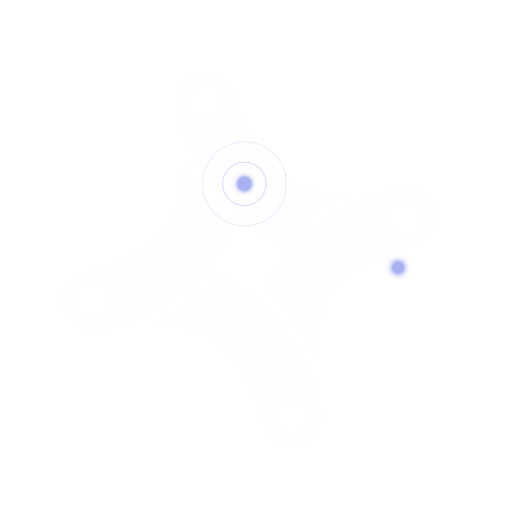An organization’s attack surface is the sum of all potential entry points for cyber threats and understanding it is essential to safeguard sensitive data. Attack surface discovery (ASD) helps businesses visualize and mitigate risks associated with their external attack surface.
Using Flare to Help with Attack Surface Discovery
How does Flare answer attack surface discovery needs?
Flare addresses attack surface discovery needs by offering proactive asset discovery so organizations gain visibility into potential vulnerabilities. The platform enables organizations to map their external attack surface so they can identify new attack vectors while monitoring threat intelligence to identify targeted attacks.
How does Flare’s external attack surface tool answer attack surface discovery needs?
By continuously mapping and visualizing the entire attack surface with Flare, organizations’ security teams gain the visibility needed to improve their security posture. Flare’s automated solution continuously monitors all public-facing assets to identify vulnerabilities and sends security teams alerts containing only the most pertinent information.
What are the key benefits of using Flare for attack surface discovery?
Flare enables security teams to understand potential threats with the following key features:
- Real-Time Monitoring: continuous discovery of internet-facing assets to help identify rogue assets and shadow IT
- Comprehensive threat intelligence: scanning clear, deep, and dark web forums and illicit Telegram channels for malicious actors mentioning corporate name or assets that may indicate a targeted attack, infected device, or compromised credentials
- Relevant threat information: reducing alert fatigue by focusing on the information and alerts that matter most to the team
Attack Surface Discovery: Brief Overview
What is attack surface discovery?
Attack surface discovery is the process of identifying and understanding potential attack vectors across on-premises and cloud environments. Organizations use ASD tools for:
- External discovery: scanning for internet-facing assets
- Continuous insight: identifying new assets to add to the asset inventory
- Vulnerability identification: scanning to identify potential attack vectors, like misconfigurations
How does attack surface discovery work?
Attack surface discovery is the process of finding and mapping all possible points in a network that attackers could exploit. The process involves creating an inventory of all internet-facing assets, including:
- Physical servers
- Web server
- Virtual machines
- Software-as-a-Service (SaaS) applications
- Firewalls and web application firewalls
- Databases
- Network devices, like switches and router
What are the benefits of attack surface discovery?
Attack surface discovery enables security teams to rapidly identify potential vulnerabilities as part of proactive, continuous external attack surface management. Some key benefits include:
- Continuous discovery: identifying previously unknown assets.
- Enhanced visibility: visibility into the larger attack surface
- Proactive risk management: addressing vulnerabilities before attackers can exploit them
- Data enrichment: integrating with other security solutions, like security information and event management (SIEM) systems, to provide additional context for alerts
Why is Attack Surface Management Especially Relevant Now?
How does attack surface discovery help identify rogue and shadow IT?
Shadow IT consists of public-facing assets that remain unknown or unmanaged and include:
- Personal devices connecting to networks
- Unauthorized applications on devices
- Internet of Things (IoT) devices, like printers or smart TVs
Rogue devices are unauthorized devices connected to an organization’s network without having been granted permission. While many rogue devices may be accidental, they can also be malicious actors attempting to gain unauthorized access to systems, networks, and data.
Rogue devices and shadow IT are unmanaged or unknown devices that can introduce the following risks:
- Security weaknesses: known vulnerabilities that attackers can exploit.
- Malware: lack of visibility into whether antivirus software is installed
- Data leaks: inadvertently accessing or exfiltrating sensitive data
- Compliance risk: unauthorized access potentially violating internal controls or regulatory requirements
Attack surface discovery continuously discovers and assesses digital assets for hidden vulnerabilities that traditional security measures might miss. Security teams can detect and analyze shadow IT that traditional tools, like vulnerability scanners, might otherwise miss.
By automating attack surface discovery, security teams can gain benefits like:
- Identification of unknown and unmanaged assets
- Improved visibility into potential vulnerabilities
- Detection of rogue assets that bypass the existing security policies
How does dark web monitoring help with attack surface discovery?
Dark web monitoring plays a crucial role in attack surface discovery by exposing hidden risks to an organization. It helps security teams identify leaks of sensitive information tied to their digital assets that provides visibility into potential vulnerabilities across their external attack surface.
Dark web monitoring aids in attack surface discovery:
- Reveal Exposure Risks: Detects compromised data that may be circulating in illicit online marketplaces.
- Insight into Emerging Threats: Provides critical insights into new threats that could exploit attack vectors in the external ecosystem.
- Proactive Remediation: Finds stolen assets or accounts before they can be exploited by malicious actors.
What are the Key Features of an Attack Surface Discovery Solution?
Attack surface discovery solutions offer several key features crucial for managing an organization’s security.
- Comprehensive Asset Mapping: These tools automatically identify digital assets across the external IT ecosystem. This includes assets managed by third parties or through shadow IT, helping create an asset inventory.
- Potential Vulnerabilities Identification: By mapping every digital asset, security teams gain insights into potential vulnerabilities. This information is invaluable for preventing attackers from exploiting weaknesses.
- Snapshot of Threat Exposures: Attack surface discovery provides a snapshot of an organization’s external threats at any given time. This feature aids pentesters, security consultants, and analysts in understanding the current security posture.
- Support for Digital Transformation: Organizations undergoing digital transformation or moving to the cloud benefit from maintaining an accurate list of assets. This reduces cybersecurity risks by ensuring continuous discovery of internet-facing assets and cloud assets.
Attack Surface Discovery and Flare
Flare provides the leading Threat Exposure Management (TEM) solution for organizations. Our technology constantly scans the online world, including the clear & dark web, to discover unknown events, automatically prioritize risks, and deliver actionable intelligence you can use instantly to improve security. Flare integrates cyber threat intelligence (CTI), digital risk protection (DRP), external attack surface management (EASM), and other functions so organizations can proactively identify, prioritise, and respond to the types of exposures that threat actors most commonly leverage during attacks.
Our solution integrates into your security program in 30 minutes to provide your team with actionable intelligence and automated remediation for high-risk exposure. See it yourself with our free trial.


